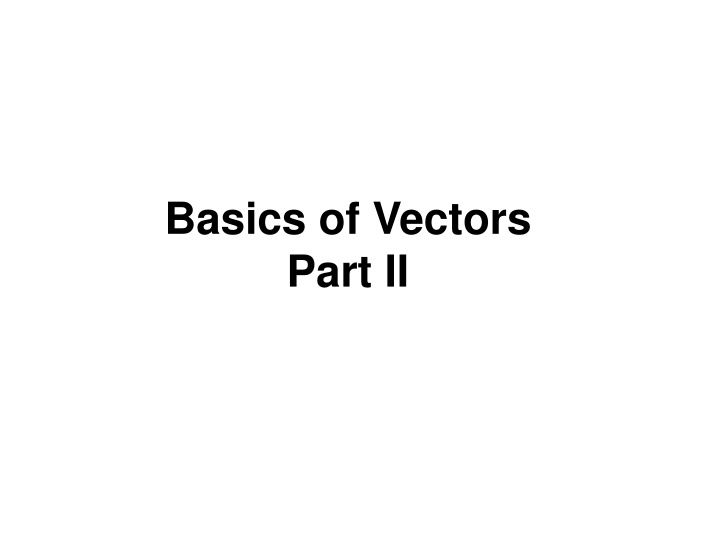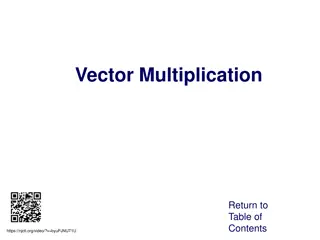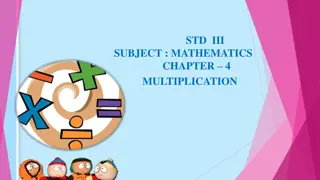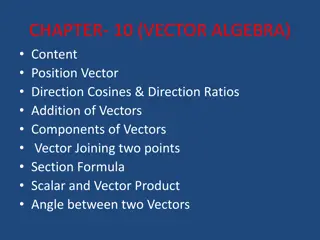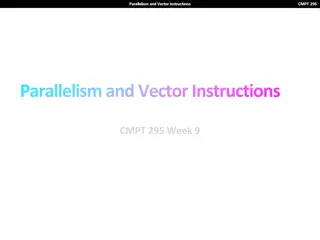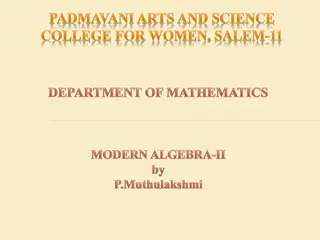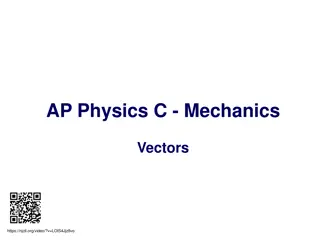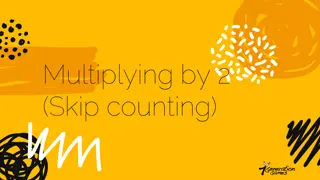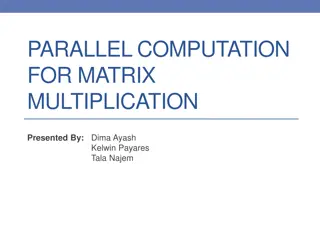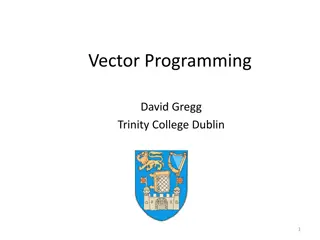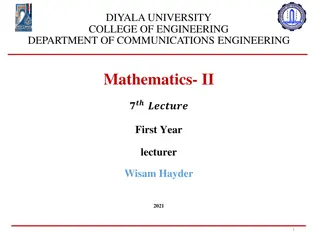Vector Multiplication and Properties
Explore the concept of vector multiplication in mathematics including scalar product, vector product, dot product, and cross product. Understand their definitions, geometric interpretations, properties, and applications. Learn how to calculate scalar triple products and vector triple products, along with the properties of dot and cross products. Discover the geometrical meaning of these operations and their significance in various mathematical and physical contexts.
Download Presentation

Please find below an Image/Link to download the presentation.
The content on the website is provided AS IS for your information and personal use only. It may not be sold, licensed, or shared on other websites without obtaining consent from the author.If you encounter any issues during the download, it is possible that the publisher has removed the file from their server.
You are allowed to download the files provided on this website for personal or commercial use, subject to the condition that they are used lawfully. All files are the property of their respective owners.
The content on the website is provided AS IS for your information and personal use only. It may not be sold, licensed, or shared on other websites without obtaining consent from the author.
E N D
Presentation Transcript
Basics of Vectors Part II
VECTOR MULTIPLICATION When two vectors A and B are multiplied, the result is either a scalar or a vector depending on how they are multiplied. Thus there are two types of vector multiplication: 1. Scalar (or dot) product: A B 2. Vector (or cross) product: A X B Multiplication of three vectors A, B, and C can result in either: 3. Scalar triple product: A (B X C) or 4. Vector triple product: A X (B X C)
Dot Product The dot product of two vectors A and B, written as A B. is defined geometrically as the product of the magnitudes of A and B and the cosine of the angle between them. Thus: ? ? = ?? ?????? Where ??? is the smaller angle between A and B. if ? = (??,??,??) and ? = ??,??,??, then: ? ? = ????+ ????+ ???? Two vectors A and B are said to be orthogonal (or perpendicular) with each other if ? ? = ?? ???90 ? ? = ?
Note that dot product obeys the following: (i) Commutative law: ? ? = ? ? (ii) Distributive law: ? ? + ? = ?.? + ?.? ?.? = ??= ?? (iii) Also note that: ?? ??= ?? ??= ?? ??= 0 ?? ??= ?? ??= ?? ??= 1
Cross Product The cross product of two vectors A and B, written as A X B, is a vector quantity whose magnitude is the area of the parallelopiped formed by A and B (see Figure 1.7) and is in the direction of advance of a right-handed screw as A is turned into B. ? ? = ?? ???????? where ?? is a unit vector normal to the plane containing A and B. FIGURE 1.7 The cross product of A and B is a vector with magnitude equal to the area of the parallelogram and direction as indicated.
The direction of ?? is taken as the direction of the right thumb when the fingers of the right hand rotate from A to B as shown in Figure 1.8(a). Alternatively, the direction of ??is taken as that of the advance of a right-handed screw as A is turned into B as shown in Figure 1.8(b). FIGURE 1.8 Direction of A B and an using (a) the right-hand rule and (b) the right-handed-screw rule.
if ? = (??,??,??) and ? = ??,??,??, then: ?? ?? ?? ?? ?? ?? ?? ?? ?? ? ? = ? ? = ???? ??????+ ???? ??????+ ???? ?????? which is obtained by "crossing" terms in cyclic permutation, hence the name cross product.
Note that the cross product has the following basic properties: (i) It is not commutative: ? ? ? ? It is anti-commutative: ? ? = ? ? (ii) It is not associative: ? (? ?) (? ?) ? (iii) It is distributive: ? ? + ? = ? ? + ? ? (iv) ? ? = ? ?? ??= ?? ?? ??= ?? ?? ??= ??
FIGURE 1.9 Cross product using cyclic permutation. (a) Moving clockwise leads to positive results. (b) Moving counterclockwise leads to negative results.
Scalar Triple Product Given three vectors A, B, and C, we define the scalar triple product as ? ? ? = ? ? ? = ? ? ? obtained in cyclic permutation. If ? = (??,??,??), ? = ??,??,??, and ? = ??,??,?? then: ? ? ? is the volume of a parallelepiped having A, B, and C as edges and is easily obtained by finding the determinant of the 3 X 3 matrix formed by A, B, and C; that is, ?? ?? ?? ?? ?? ?? ?? ?? ?? ? ? ? =
Vector Triple Product For vectors A, B, and C, we define the vector triple product as ? ? ? = ? ? ? ?(? ?)
References 1. M.N. Sadiku, Elements of Electromagnetics, New York: Oxford University Press, 2000.
